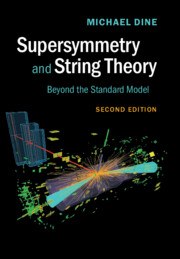Book contents
- Frontmatter
- Dedication
- Contents
- Preface to the First Edition
- Preface to the Second Edition
- A note on the choice of metric
- Text website
- Part 1 Effective field theory: the StandardModel, supersymmetry, unification
- 1 Before the Standard Model
- 2 The Standard Model
- 3 Phenomenology of the Standard Model
- 4 The Standard Model as an effective field theory
- 5 Anomalies, instantons and the strong CP problem
- 6 Grand unification
- 7 Magnetic monopoles and solitons
- 8 Technicolor: a first attempt to explain hierarchies
- Part 2 Supersymmetry
- Part 3 String theory
- Part 4 Appendices
- References
- Index
1 - Before the Standard Model
from Part 1 - Effective field theory: the StandardModel, supersymmetry, unification
- Frontmatter
- Dedication
- Contents
- Preface to the First Edition
- Preface to the Second Edition
- A note on the choice of metric
- Text website
- Part 1 Effective field theory: the StandardModel, supersymmetry, unification
- 1 Before the Standard Model
- 2 The Standard Model
- 3 Phenomenology of the Standard Model
- 4 The Standard Model as an effective field theory
- 5 Anomalies, instantons and the strong CP problem
- 6 Grand unification
- 7 Magnetic monopoles and solitons
- 8 Technicolor: a first attempt to explain hierarchies
- Part 2 Supersymmetry
- Part 3 String theory
- Part 4 Appendices
- References
- Index
Summary
Two of the most profound scientific discoveries of the early twentieth century were special relativity and quantum mechanics. With special (and general) relativity came the notion that physics should be local. Interactions should be carried by dynamical fields in space–time. Quantum mechanics altered the questions which physicists ask about phenomena; the rules governing microscopic (and some macroscopic) phenomena were not those of classical mechanics. When these ideas were combined they took on their full force, in the form of quantum field theory: particles themselves are localized, finite-energy, excitations of fields. Otherwise mysterious phenomena, such as the connection of spin and statistics, were immediate consequences of this marriage. But quantum field theory posed serious challenges for its early practitioners. The Schrödinger equation seems to single out time, making a manifestly relativistic description difficult. More seriously, but closely related, in quantum field theory the number of degrees of freedom is infinite, in contrast with the quantum mechanics of atomic systems. In the 1920s and 1930s, physicists performed conventional perturbation theory calculations in the quantum theory of electrodynamics, namely quantum electrodynamics (QED), and obtained expressions which were neither Lorentz invariant nor finite. Until the late 1940s these problems stymied any quantitative progress, and there was serious doubt whether quantum field theory was a sensible framework for physics.
Despite these concerns, quantum field theory proved a valuable tool with which to consider problems of fundamental interactions. Yukawa proposed a field theory of the nuclear force in which the basic quanta were mesons. The corresponding particle was discovered shortly after the Second World War. Fermi was aware of Yukawa's theory and proposed that weak interactions arose through the exchange of some massive particle – essentially the W± bosons, which were finally discovered in the 1980s. The large mass of these particles accounted for both the short range and the strength of the weak force. Because of its very short range, one could describe it in terms of four fields interacting at a point. In the early days of the theory, these were the proton, neutron, electron and neutrino. Viewed as a theory of four-fermion interactions Fermi's theory was very successful, accounting for all experimental weak interaction results until well into the 1970s. Yet the theory raised even more severe conceptual problems than QED.
- Type
- Chapter
- Information
- Supersymmetry and String TheoryBeyond the Standard Model, pp. 3 - 7Publisher: Cambridge University PressPrint publication year: 2016



